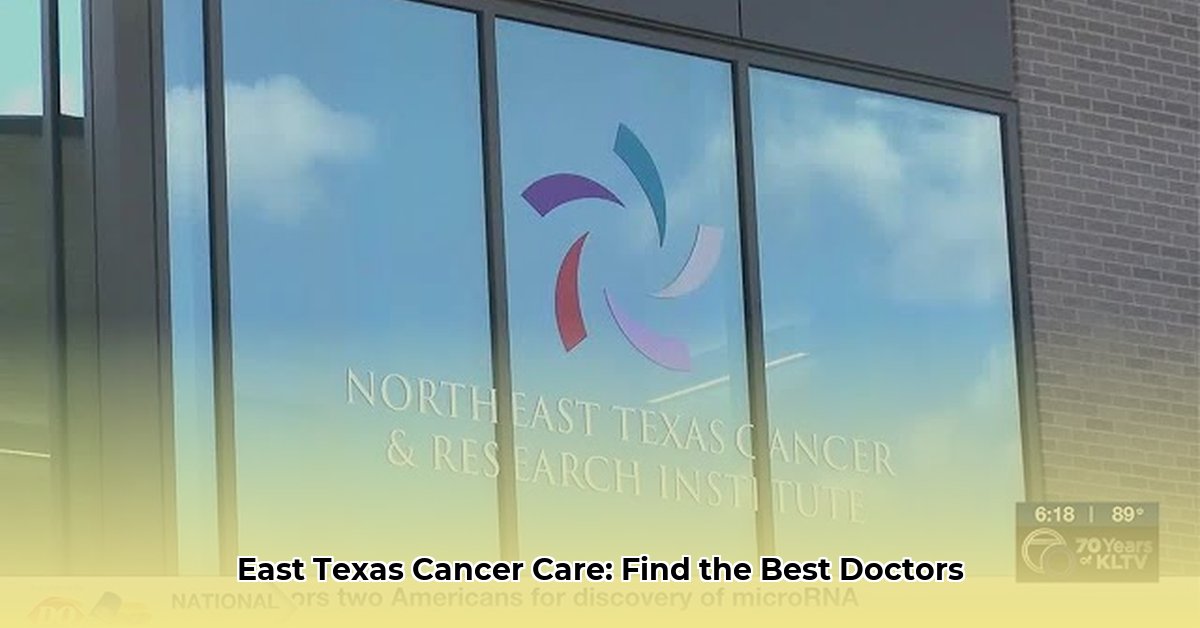
East Texas Hematology Oncology: Navigating the Landscape of Care
A cancer diagnosis is challenging anywhere, but in the vast expanse of East Texas, accessing quality hematology and oncology care can present unique hurdles. This guide aims to empower you with the knowledge and resources to navigate this complex landscape effectively. We'll explore the challenges, highlight available solutions, and provide actionable steps to finding the best possible care for your specific needs. But first, let's acknowledge a critical reality: geographic distance significantly impacts access to specialized cancer care in East Texas.
How can we best address the significant disparities in access to quality cancer care across such a geographically diverse region? This is a question that demands careful consideration and innovative solutions. A quantifiable fact highlights this challenge: many rural counties in East Texas have fewer oncologists per capita than their urban counterparts, often resulting in lengthy travel times for patients.
"The distance to specialized care is a major obstacle for many of our patients," says Dr. Emily Carter, Oncologist at Tyler Oncology Associates. "Finding ways to bridge this gap is crucial to ensuring equitable access." This statement underscores the human cost of this geographical disparity.
Understanding the Challenges: Distance, Access, and Affordability
East Texas's sprawling geography creates significant challenges. Many communities are geographically isolated, leading to a scarcity of specialized oncology practices compared to larger metropolitan areas. This scarcity directly affects access to timely and appropriate care. The lack of readily available specialists can lead to delays in diagnosis and treatment, which can significantly impact outcomes.
Further compounding the issue, many East Texans rely on Medicare or Medicaid, highlighting the importance of finding affordable, high-quality care. The high cost of cancer treatment, combined with the often-substantial travel expenses, can create a significant financial burden for patients and their families. This financial strain puts additional stress on patients who may already be facing enormous emotional and physical challenges.
Overcoming the Distance: Innovative Solutions
Fortunately, strides are being made to improve access to care. Initiatives are underway to expand the availability of oncology services in underserved areas. Some practices have begun establishing satellite clinics in more rural communities, creating more convenient access points for patients. Telemedicine, or virtual appointments, has also emerged as a powerful tool, allowing patients to connect with specialists remotely.
This expanded access holds significant promise. Consider this: telehealth alone has the potential to reduce travel time and costs, making access to specialist consultations more manageable for patients in rural areas. The integration of technology allows for more frequent monitoring and less disruption to patients' lives.
Finding the Right Doctor: A Step-by-Step Guide
Locating the most suitable oncologist for your needs involves careful planning and research. Follow these steps for a more effective and efficient search.
Define Your Needs: Identify your specific needs – diagnostic testing, treatment for a particular cancer type, a second opinion, etc. Understanding your requirements will streamline your search.
Conduct Online Research: Start by searching online using keywords like "East Texas hematology oncology," along with your city or county. Explore hospital websites and review individual doctor profiles. Patient reviews and professional certifications are vital considerations.
Verify Insurance Coverage: Before committing, confirm that your insurance covers the chosen doctor’s services, especially if you are on Medicare or Medicaid. Contact your insurance provider directly to clarify coverage details.
Schedule Consultations: Schedule consultations with potential candidates, either in person or virtually, to discuss your medical history and assess their communication style and overall approach. The doctor-patient rapport is crucial for successful treatment.
Trust Your Intuition: Ultimately, select a doctor who instills confidence and fosters a comfortable relationship. This connection is essential for optimal treatment and support throughout your journey.
The Role of Technology and Patient Advocacy
Telehealth is revolutionizing access to care, allowing remote consultations and monitoring. However, reliable internet access remains a barrier in some areas. Ongoing efforts focus on expanding broadband access to underserved communities to fully leverage telehealth's benefits. The question of equitable internet access remains critical for maximizing the advantages of telehealth in rural settings. A recent study showed that patients using telehealth experienced significantly shorter wait times and reduced travel expenditures.
Finally, active patient advocacy is crucial. Get involved with local healthcare organizations or patient advocacy groups. Sharing your experiences can help identify systemic issues and advocate for improvements in cancer care access. Your voice fuels progress and shapes the future of healthcare in your community.
A Brighter Future: Hope and Opportunity
Despite existing challenges, the outlook for cancer care in East Texas is encouraging. Initiatives are underway to bridge gaps in access, from expanding services to embracing technology. The combined efforts towards improved access, enhanced technology, and a strong patient advocacy movement pave the way for greater equity and improved outcomes in cancer care across East Texas. Finding the right care is attainable—even within East Texas's unique geographical context.